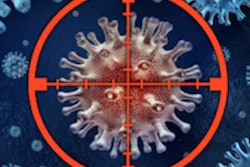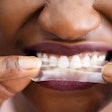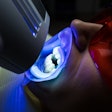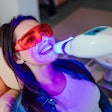Transoral robotic surgery (TORS) may be an effective treatment for sufferers of obstructive sleep apnea/hypopnea syndrome (OSAHS), according to a recent study in Laryngoscope (July 2013, Vol. 123:7, pp. 1811-1816).
Ho-Sheng Lin, MD, from Wayne State University School of Medicine, and colleagues reported promising results for treating sleep apnea using TORS, which has recently been established in terms of safety and tolerability for removing cancerous tumors in the back of the throat.
Patients with OSAHS typically are treated with positive airway pressure (PAP), which is extremely safe and often effective, the study authors noted. However, not all OSAHS patients can tolerate PAP, which involves wearing a mask during sleep that forces the airway open so they can continue breathing without interruption.
For patients who cannot tolerate PAP, surgery may be a viable alternative. A common procedure, uvulopalatopharyngoplasty, targets the obstruction at the level of the soft palate, but it has been found to be effective less than 50% of the time.
Obstruction at the back of the tongue (BOT) can play a significant role in sleep apnea. Traditionally, surgical treatment of BOT blockage has been challenging because it is hard for doctors to see and operate in that region.
Using a robotic device called the da Vinci Surgical System, Dr. Lin and his team were able to gain improved access to the BOT region to safely and precisely remove the excessive tissue causing airway obstruction. For this study, they reported on the outcome of 12 patients who underwent BOT resection via TORS. They were selected for analysis because they underwent removal of excessive BOT tissue and nothing else.
The researchers found significant improvements in the apnea-hypopnea index (AHI) for 75% of the study participants. AHI assesses the severity of sleep apnea based on the total number of complete cessations (apnea) and partial obstructions (hypopnea) of breathing occurring per hour of sleep. Even the other 25% of participants saw improvements in their condition, the researchers noted, with some now better able to tolerate PAP treatments.
More research involving larger groups is needed to further assess the efficacy of TORS-assisted BOT, with an eye toward developing standardized criteria as to which patients would benefit from it most.



















